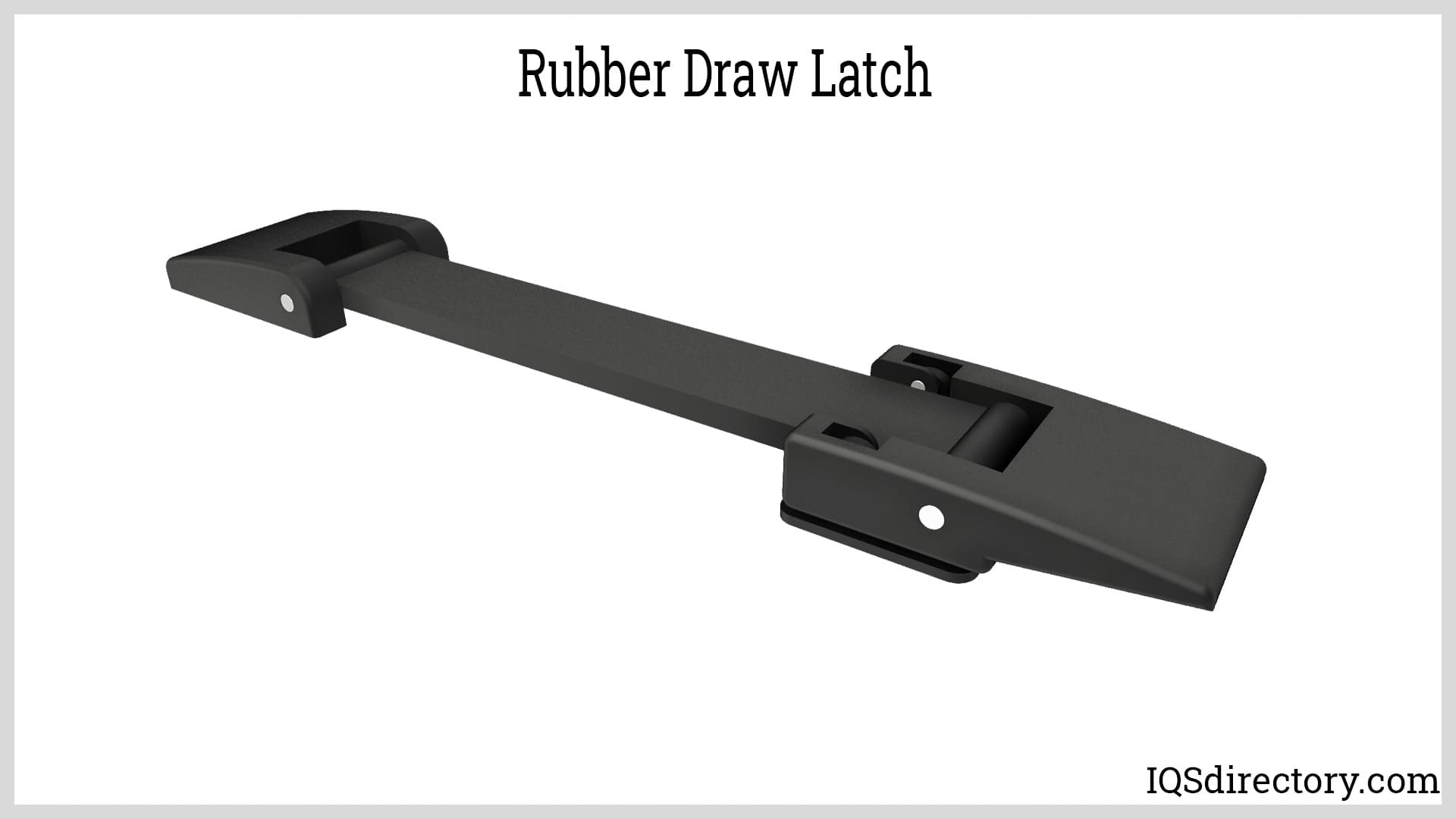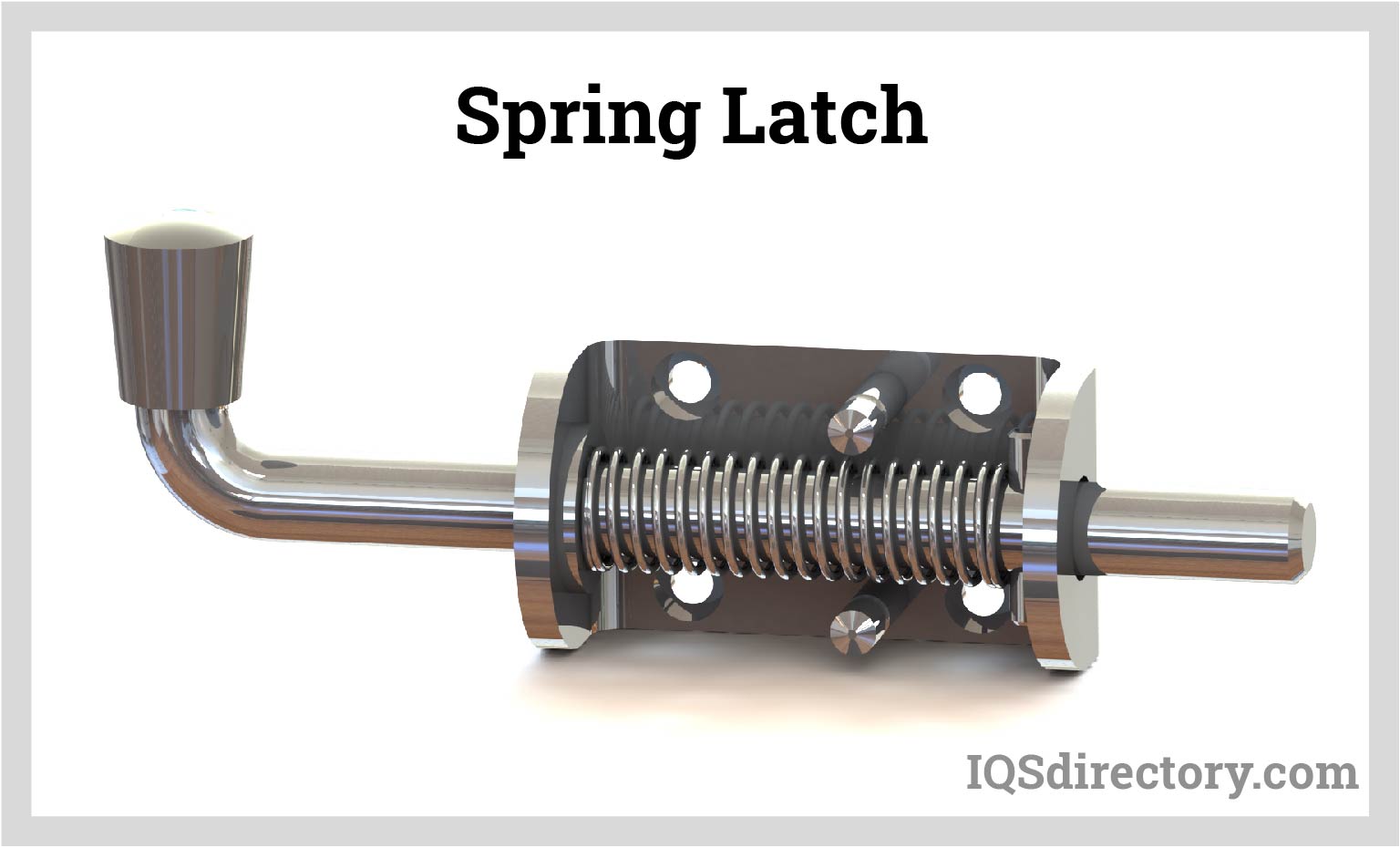While latches can be made of many different materials, plastic is commonly used for latch components. Plastic latches are used in industrial, commercial, domestic and agricultural settings. Read More…
Hardware Mfg. supplies stock inventory parts in addition to creating custom components for OEM and resellers. We work with a number of different industries such as agriculture, drug tablet, livestock, truck equipment, conveyors, and more.

Elesa offers a wide range of industrial hinges including plastic hinges, stainless steel hinges, and aluminum hinges. There are also various types of fixing, rotation angles, and load capacities. The plastic hinges technical data sheets show punctual values of resistance to aid in the selection of the right model and size. The production materials available: technopolymer, SUPER-technopolymer,...

At PROTEX® we offer light to heavy-duty fasteners, handles, flush latches, case fittings, bandclamps, catch plates and more. We manufacture a large range of over centre fasteners often known as draw latches/toggle clamps/catches/over centre toggle fasteners.

At Nielsen Engineered Hardware Solutions, we specialize in designing and manufacturing high-quality latches tailored to meet the diverse needs of our customers. With a commitment to innovation and reliability, we work closely with our clients to deliver solutions that enhance functionality and performance across a wide range of industries. Whether you need a standard latch or a custom-engineered...

More Plastic Latch Manufacturers
Plastic latches are most often utilized in applications which do not require high strength or durability in order to provide an effective closure. While many door latches and gate latches contain components of plastic, solid plastic latches are incorporated often in utility boxes, cabinets or storage compartments.
Latches are used to join two adjacent surfaces with the possibility or frequent and easy securing and disengaging. While industrial latches are most often made of strong metals, the use of plastic in latch manufacturing provides added impact resistance. This property combined with the corrosion resistance of plastic is important to increasing the longevity of exposed latches.
ABS, silicon and thermoplastics such as nylon 6/6 and polytherimide are just a few examples of frequently used plastics. Thermoplastics are used as they are easily shaped from molten form into durable and hard-wearing components. Plastic latches are well suited to many possible latch designs and are most often manufactured using injection molding or a similar technique to form the latch components.
In injection molding, the plastic resin, typically in pellet form, is heated until molten, and then injected into a preformed mold. Once in the mold cavity, the plastic is allowed to cool and set and is then ejected as the finished component. Stamping or machining may also be used to manufacture plastic latches. Depending on the quality of the molding, or stamping process, secondary machining may be required to ensure a piece is finished.
There are many benefits to working with and using latches made of plastic or with plastic components. Plastic latches are water and corrosion resistant and thus are widely used in marine and outdoor applications. The plastic components of other latches are integral in latches that require some give and flexibility that metals cannot offer.
Draw latches, for example, commonly use plastic in the strap mechanism of the latch. Plastics are not always flexible, however, and can also offer strength and rigidity. In applications such as doors, drawers, compartments and lids, life vests and a variety of cabinetry uses, plastic latches provide a simple and cost-effective closure solution to closure requirements.
While plastic may not be as strong as many metal alternatives, the growing diversity in types of thermoplastics makes them suitable to the many different types of latches available. Plastic is also able to adjusted in terms of color and finish in order to incorporate it more fully into its finished product or placement.

















 Bolts
Bolts Fasteners
Fasteners Gas Spring
Gas Spring Handles
Handles Hinges
Hinges Latches
Latches Locks
Locks WIre Hooks
WIre Hooks Castings & Forgings
Castings & Forgings Bulk Material Handling
Bulk Material Handling Electrical & Electronic Components
Electrical & Electronic Components Flow Instrumentation
Flow Instrumentation Hardware
Hardware Material Handling Equipment
Material Handling Equipment Metal Cutting Services
Metal Cutting Services Metal Forming Services
Metal Forming Services Metal Suppliers
Metal Suppliers Motion Control Products
Motion Control Products Plant & Facility Equipment
Plant & Facility Equipment Plant & Facility Supplies
Plant & Facility Supplies Plastic Molding Processes
Plastic Molding Processes Pumps & Valves
Pumps & Valves Recycling Equipment
Recycling Equipment Rubber Products & Services
Rubber Products & Services